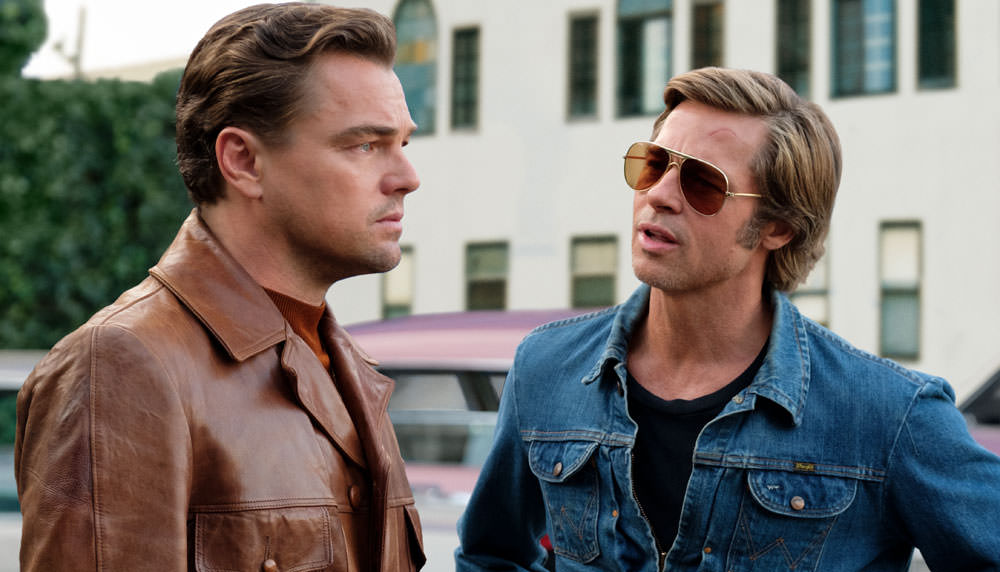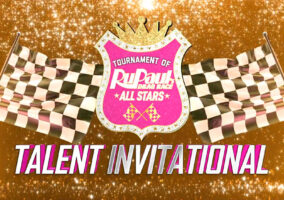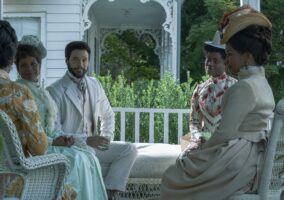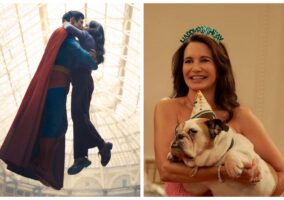
Of all the things we expected going into Once Upon a Time in Hollywood, Quentin Tarantino’s deep dive into the Hippy Hollywood scene of the 1960s and the events surrounding the murder of Sharon Tate by followers of Charles Manson, a gentle, funny character examination of two men aging out of their surroundings and a loving look at a world long gone were not high on our list.
By design, the discussion surrounding this film has been somewhat vague about the particulars of it and Tarantino himself cautioned critics from revealing too much about the film’s narrative trajectory. If you’ve been paying any sort of attention to Tarantino’s output in recent years, then you can probably guess why there’s been a concerted anti-spoiler effort swirling around a film that, on the surface at least, appears to be a reconstruction of historic events using fictional protagonists to filter them for the audience. What caught us off guard was the very un-Tarantino-like sense of wistful nostalgia bordering on sentimentalism. Los Angeles 1969 is a world of legendary nightlife, iconic neon signs, snippets of Top 40 radio, underage hippy chicks with their dirty feet on the dashboard, glamorous parties, and aging square-jawed cowboys, trying desperately to hang on to relevance. Leonardo DiCaprio plays Rick Dalton, a former star of his own cowboy show, now making a living play a string of guest-starring heavy roles on the cowboy shows of his replacements. By his side is his long-time stuntman and now more or less majordomo Cliff Booth, played with appropriate leading man swagger by Brad Pitt. Both men find themselves aging out of relevance and looking at the encroaching younger generation with a combination of bemusement, resentment, and outright fear.
Like most western gunslinger tales, this one’s about the old world and the new world clashing. In a classic western, it would be about the outlaw frontier being tamed by the badge and the bible. In Tarantino’s modern version of the west, it’s about classic old Hollywood giving way to the new ways of a younger generation- and how two grizzled old gunslingers well past their prime and with considerable sins to their name still have enough fight in them to retaliate against the encroachment of the modern. There’s a fascinating tension between the story of the two protagonists, who are each in their own way railing against the progression of time and the changing of culture, and the style of the film, which casts that very changing culture in a warm, golden light of nostalgia. In other words, it’s a film by an aging man looking back to a time that was never his, about two men living in that time and feeling like they belong less and less to it. Despite the slightly contradictory nature of these layers, the film is crystal-clear in its intentions and themes, in the nature of a film made by the collective efforts of a group of people who knew what they wanted to say and how they wanted to say it. Aiding Tarantino’s nostalgic script and directing tremendously is the hazy, soft, memory-tinged cinematography of long time collaborator Robert Richardson, which somehow manages to avoid cliche even as it wallows in nostalgia. Through his lens, 1969 L.A. runs hot and cool, hazy and sharp; the lows and the highs of its social strata perfectly captured and framed.
It’s probably not surprising that DiCaprio and Pitt give great performances, or that the former plays someone intensely high strung and the latter plays someone coolly laid-back. Neither actor is playing against type here, but Rick Dalton’s raging insecurity and Cliff Booth’s sweetly unaffected moral center wrapped in a machine capable of tremendous violence offered nuances and surprises throughout. Both actors are fantastic with each other, but even better when Tarantino sends them off in separate directions to explore the ups and downs of their time and place. There had been some earlier criticisms of the film regarding Robbie’s film time and how little dialogue she actually had. Tarantino bristled at the observation when it was presented to him and in the risk of getting pelted with rocks and garbage, we have to say he has a bit of a point. Acting isn’t about reciting lines and Robbie’s performance is neither limited nor unworthy of her. She gives Sharon Tate a full, breathing life and an inner light in all of her scenes, but most specifically in the charming one where she goes into a movie theater to watch herself onscreen in the Dean Martin-starring The Wrecking Crew, delighted by her own performance and even more delighted when the surrounding theater patrons respond enthusiastically to it. This isn’t a film “about” Sharon Tate. It’s not even a film about her murder. In many ways, she serves here as a sort of angelic, beatific figure of aspiration; a representation to Rick Dalton of just how much he’s aged out of his stardom and a figure of goodness and light to the audience; an embodiment of just why Tarantino finds this time and place so worthy and beautiful.
Much will be made of Robbie’s lack of dialogue, just as much will be made of the film’s treatment of iconic martial arts star and actor Bruce Lee, played to perfection by Mike Moh, who brilliantly captures Lee’s brand of cockiness and air of mysticism. He is the only person of color in the story and his one scene exists to make Brad Pitt’s character look like a supernatural form of badass. There is a point to this scene and it more or less pays off by the climax, but it’s hard not to notice that the film fawns all over its recreations of historic Hollywood figures, from a hugely miscast Damian Lewis as Steve McQueen to Timothy Olyphant as TV western actor James Stacey but rendered the one famous person of color in the story a little silly.
But we suspect these questions and issues will pale in comparison to the discussion that will surround the climax of the film; not just the fact of Tarantino’s narrative choice, but also the manner in which he chose to depict it. We were evenly split on the issue. Lorenzo loved it; Tom found it disconcerting – but perhaps intentionally so on the director’s part. We won’t say more on that. We’ll just applaud the director for ending on such a discussable note – and for offering up one of the more fascinating, thoughtful, visually rich, well-acted and just all-around entertaining films of 2019. Once Upon a Time in Hollywood looks beautiful, sounds great, and offers moments of tragedy, chaos, pain, friendship and hilarity in the manner of a film determined at all costs to entertain and stimulate its audience, by a director who knows exactly how to do all of those things to perfection when he sets his mind to it.
[Photo Credit: Sony Pictures Entertainment/CTMG/EPK.TV]
Elle Fanning in Valentino at the 2019 Giffoni Film Festival Next Post:
Idris Elba, Helen Mirren and Jason Statham at the “Fast & Furious Presents: Hobbs & Shaw” London Premiere
Please review our Community Guidelines before posting a comment. Thank you!



